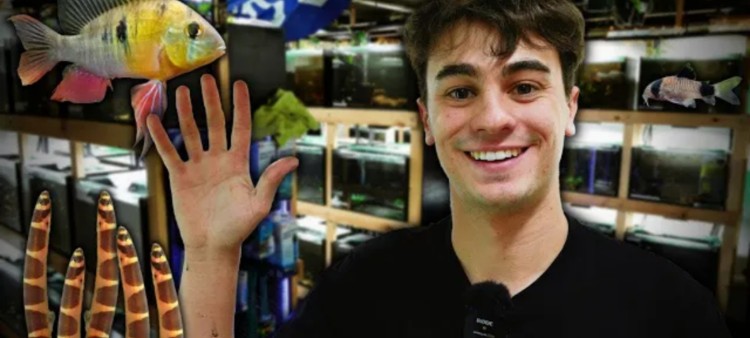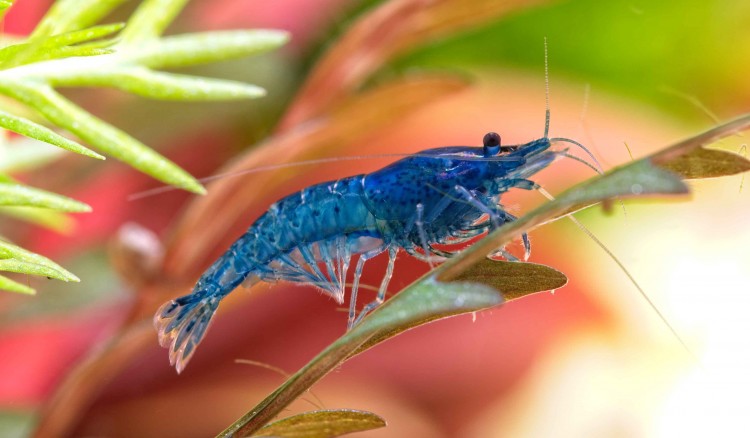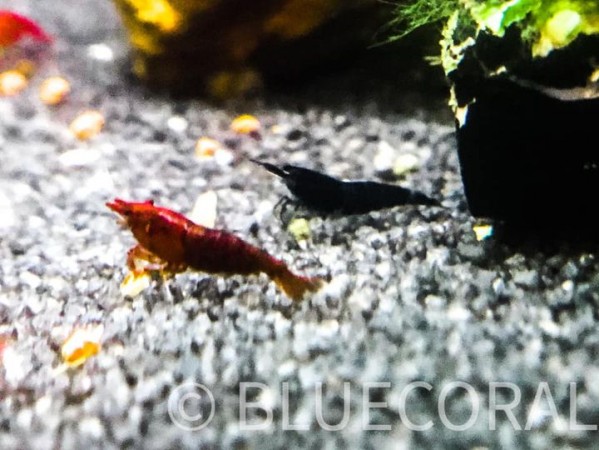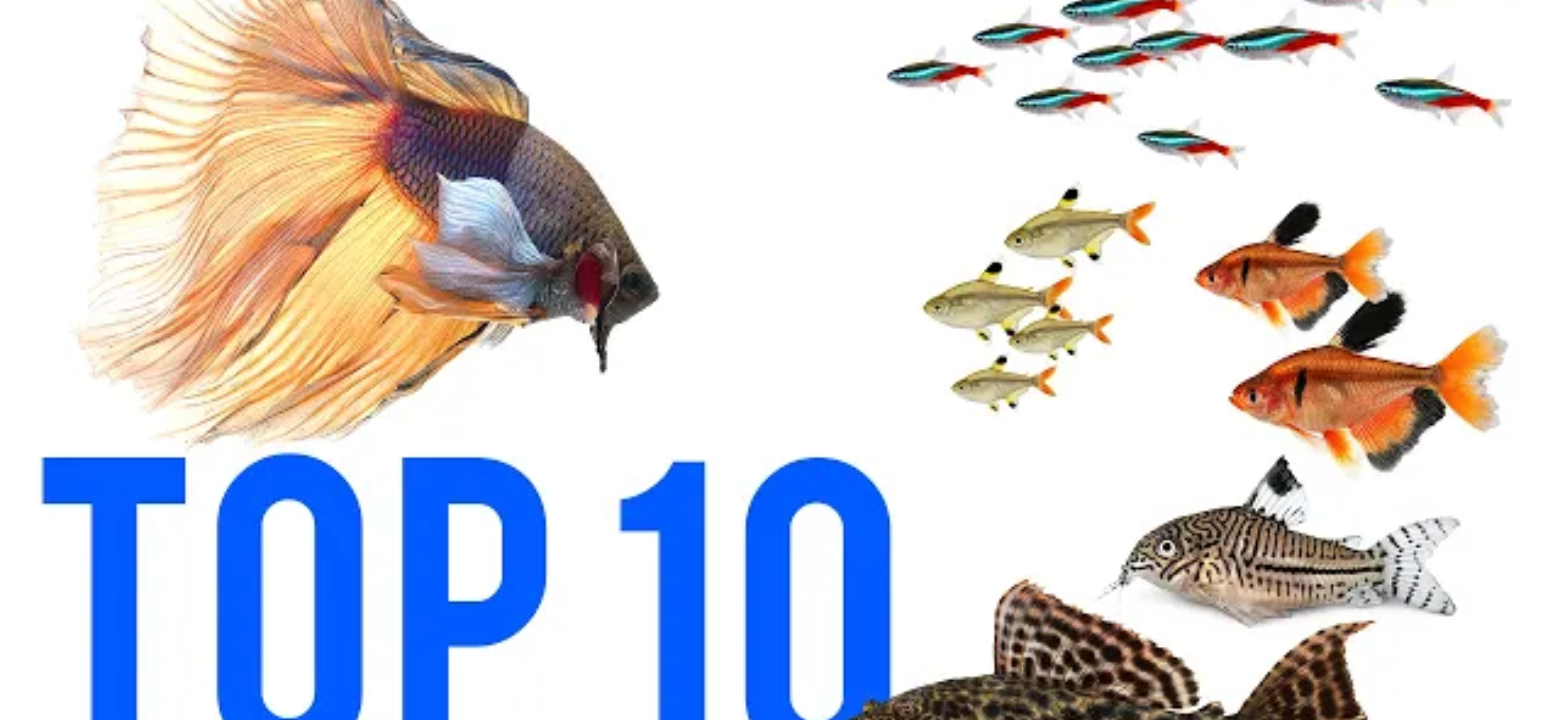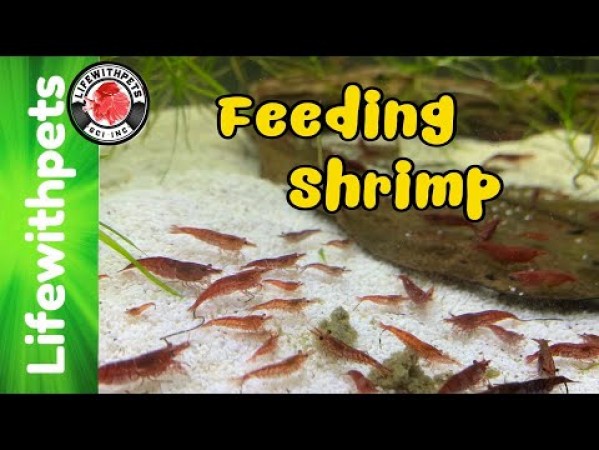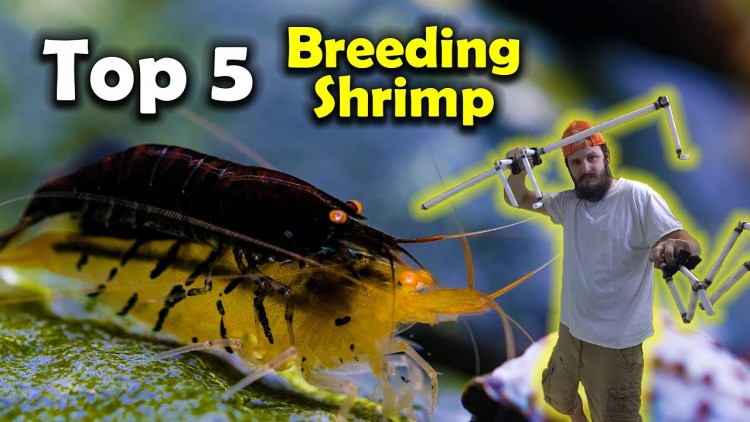- Name:
Emperor Shrimp
- Family:
- Species: Shrimp
- Scientific Name: Periclimenes imperator
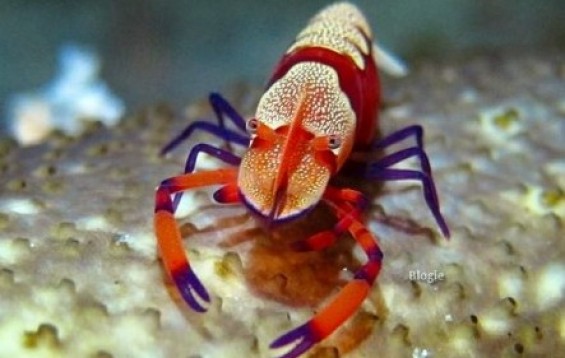

General info about Emperor Shrimp
The emperor shrimp is a small commensal shrimp, about a 3/4-inch in length. They can be easily identified by their orange sides, white back which is flecked with tiny orange dots, and orange claws that are tipped with purple. It's an interesting creature that forms symbiotic relationships in order to maximize its chance of survival. The Emperor Shrimp is an incredibly awesome, yet nuanced invertebrate in the home aquarium trade. It is not a great choice for beginner aquarium-keepers.
The emperor shrimp develop a symbiotic relationship with a range of nudibranchs and holothurians, or sea cucumbers. The shrimp live on the surface of the host, which offers him protection from predators and an extra source of food. The relationship benefits the host, as the shrimp consume any parasites on its skin. The shrimp doesn't stay still, but constantly moves up and down his host, looking for food from the substrate or that has been disturbed by the host.
Emperor shrimp can be kept as pets in a home marine or reef aquarium. They will, however, need to be kept with an appropriate host, such as a nudibranch, sea cucumber or Medusa worm. They don't need much space themselves, a 2-gallon tank is enough, but when caring for an Emperor Shrimp, you are effectively caring for a sea slug which will in turn care for the shrimp. So, the size of the aquarium will be determined by the size and space requirements of the host. These are the nuances that make the aquarium trade so fascinating.
Tanks should be well stocked with algae and detritus for the slug and the shrimp. Avoid housing with larger fish that will see the Emperor Shrimp as a nice meal. Keeping snails rather than crabs is safer. Porcelain crabs or small hermits are also less of a risk. Anemones can eat shrimp, especially the notorious Condylactis which many people are unaware of its hungry nature and lack of symbiosis. Overall, the nuanced tank environment required for the Emperor Shrimp must be met before this animal can thrive. If so, this is a beautiful specimen and a truly fascinating piece of nature found inside a tank.
Like all crustaceans, these guys do need calcium. They absorb the calcium into their exoskeleton, which is not a fast process. During molting times they will be vulnerable to predation if they are in a tank with fish or other crustaceans because of the odor produced during this process. They also require at least a low photosynthetic light to allow their bodies to utilize important elements, kind of like how people need sunlight to process Vitamin C. When a shrimp molts, it will eat part of its shell to use some of the nutrients its body just lost. Leave the shell in the water. It will be gone before you know it. Like all molting creatures, death is a possibility. During the “undressing” they can get stuck, the shell can prevent them from breathing and reduce O2 levels in their body. A leg or claw can easily be ripped off, however, they usually grow back within 1 or 2 moltings. In a tank with no predators this is fine, but sometimes this can be dangerous if the shrimp cannot swim full speed away from its threat.
Emperor Shrimp Diet & Nutrition
The Emperor Shrimp pairs in a symbiotic relationship with nudibranchs and other sea slugs in order to best obtain nutrients in the form of fecal matter and detritus. However, the emperor shrimp is both a carnivore and a detritivore, so it eats a range of different foods. In the wild, it eats parasites from its host, in addition to algae and detritus from the substrate, and any small meaty foods that come along, such as smaller shrimp or fry. In captivity, they will eat fish flakes, brine shrimp, pellet foods and other small alive or frozen prey. You just have to make sure some food reaches the substrate, where they will pick it up.
Emperor Shrimp Origin
Emperor shrimps are common all over the Indo-Pacific region. They tend to be found anywhere their hosts can be found, such as on slopes and reef flats, or in lagoons and bays. They live on the seabed, because they like to find their food among the sand or substrate on the ocean floor.
Original Detail
| Name | Species | Family | Scientific Name | More Detail | Added by |
|---|---|---|---|---|---|
| Emperor Shrimp | Shrimp | Periclimenes imperator | The emperor shrimp is a small commensal shrimp, about a 3/4-inch in length. They can be easily identified by their orange sides, white back which is flecked with tiny orange dots, and orange claws that are tipped with purple. It's an interesting creature that forms symbiotic relationships in order to maximize its chance of survival. The Emperor Shrimp is an incredibly awesome, yet nuanced invertebrate in the home aquarium trade. It is not a great choice for beginner aquarium-keepers. The emperor shrimp develop a symbiotic relationship with a range of nudibranchs and holothurians, or sea cucumbers. The shrimp live on the surface of the host, which offers him protection from predators and an extra source of food. The relationship benefits the host, as the shrimp consume any parasites on its skin. The shrimp doesn't stay still, but constantly moves up and down his host, looking for food from the substrate or that has been disturbed by the host. Emperor shrimp can be kept as pets in a home marine or reef aquarium. They will, however, need to be kept with an appropriate host, such as a nudibranch, sea cucumber or Medusa worm. They don't need much space themselves, a 2-gallon tank is enough, but when caring for an Emperor Shrimp, you are effectively caring for a sea slug which will in turn care for the shrimp. So, the size of the aquarium will be determined by the size and space requirements of the host. These are the nuances that make the aquarium trade so fascinating. Tanks should be well stocked with algae and detritus for the slug and the shrimp. Avoid housing with larger fish that will see the Emperor Shrimp as a nice meal. Keeping snails rather than crabs is safer. Porcelain crabs or small hermits are also less of a risk. Anemones can eat shrimp, especially the notorious Condylactis which many people are unaware of its hungry nature and lack of symbiosis. Overall, the nuanced tank environment required for the Emperor Shrimp must be met before this animal can thrive. If so, this is a beautiful specimen and a truly fascinating piece of nature found inside a tank. Like all crustaceans, these guys do need calcium. They absorb the calcium into their exoskeleton, which is not a fast process. During molting times they will be vulnerable to predation if they are in a tank with fish or other crustaceans because of the odor produced during this process. They also require at least a low photosynthetic light to allow their bodies to utilize important elements, kind of like how people need sunlight to process Vitamin C. When a shrimp molts, it will eat part of its shell to use some of the nutrients its body just lost. Leave the shell in the water. It will be gone before you know it. Like all molting creatures, death is a possibility. During the “undressing” they can get stuck, the shell can prevent them from breathing and reduce O2 levels in their body. A leg or claw can easily be ripped off, however, they usually grow back within 1 or 2 moltings. In a tank with no predators this is fine, but sometimes this can be dangerous if the shrimp cannot swim full speed away from its threat.
|
PalaciosAn |


